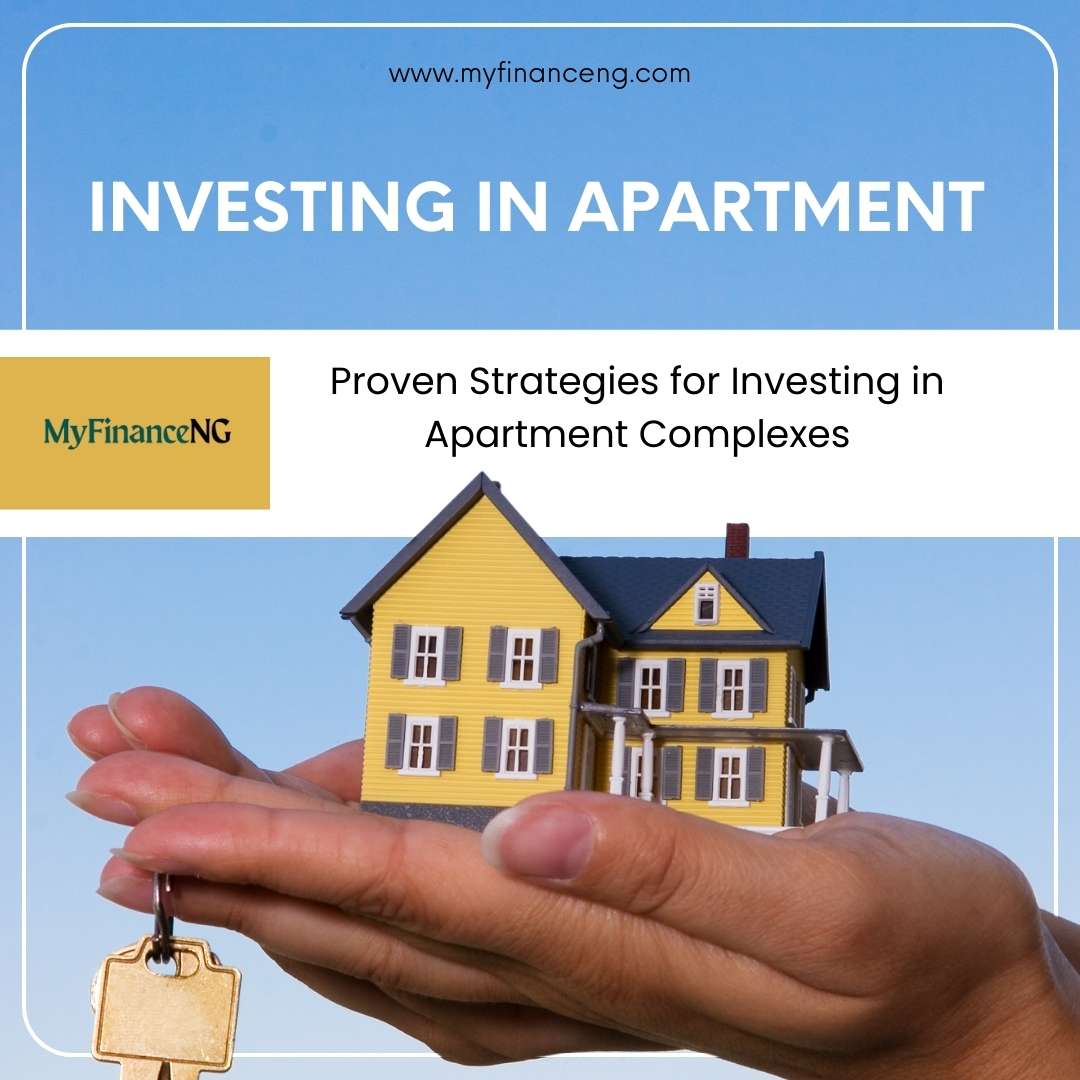Introduction
Investing in apartment complexes has become a cornerstone strategy for accumulating long-term wealth. This asset class is self-generating and has a reliable cash flow, an increasing asset value, and scalable portfolio growth, as opposed to short-term speculative stocks.
Apartment complexes are a unique opportunity for new and seasoned investors — you can earn an income while simultaneously building wealth with this asset. A knowledge of the basics and a commitment to tried and true approaches can make an average real estate investor the savvy owner of a multifamily property.
From examining the various types of investment options available to you to factors you should consider before getting started down an investment path, this guide breaks it all down for you. It serves to make apartment complex investments so much easier for you!
The Attraction of Investing in Other Apartment Complexes
Putting money in apartment complexes ensures stability in an erratic market. These multi-unit apartments meet a fundamental human need—shelter, which is why they continue to thrive, even in economic doom. Unlike commercial real estate or stock markets, which can be volatile, apartment complexes provide monthly income by collecting rent, enabling investors to forecast cash flow with greater accuracy.
Also, your apartment building benefits from forced appreciation, where the property’s value increases as you renovate and manage better. As the need for rental housing grows, apartment investing is still one of the best options for earning both passive income and long-term capital gains.
What Apartment Investing Looks Like vs. Single Family Rentals
Apartment investing diverges from single-family rental strategies in scale, complexity, and profit potential. Single-family homes take rental income from one tenant, while apartment complexes earn money through many units, which spreads risk and mitigates the event of a unit’s vacancy.
The management style is also different; apartment complexes usually need professional property management, while single-family homes can be self-managed. In addition, financing is tied to the property’s performance (commercial lending) and not personal credit. This transition allows investors to proliferate and secure larger loans, turning apartment investing into a more scalable and lucrative opportunity.
Advantages of Investing in Apartment Complexes
What do apartment complexes have to offer in terms of financial advantages? They provide steady cash flow and tax benefits along with appreciation or debt paydown and tenant diversification, making them a more balanced investment vehicle. Investors can lock up significant assets with relatively little cash upfront using financing, thus magnifying returns.
With rental demand increasing and especially surging in urban and suburban regions, apartment complexes act as a hedge against inflation and also a way to accrue equity gradually, month to month. Similarly, their inherently efficient economies of scale help them in fulfilling maintenance, marketing, and operations.
Monthly Income Potential and Strong Cash Flow

The rental income that apartment complexes generate is consistent and continuous because of their multi-unit structure. So long as occupancy is decent and expenses are kept in check, investors have a stable monthly cash flow that can handle mortgage and operating expenses while generating profit.
Unlike stocks, bonds, or other market-driven investments, this income is real and guaranteed. Profitability can be further improved with strategic rent increases, utility reimbursements, and ancillary income sources like laundry or parking fees. For anyone on the journey to financial independence or retirement, this steady stream of cash is incredibly encouraging.
While There Is Still Time To Benefit From The Rising Likes And Equity Winds.
Cash is flowing , together with the fact that apartment complexes have appreciated over time. The property value increases, and with it, the investor’s equity. This appreciation is driven by both market conditions and strategic property improvements , known as forced appreciation.
Where single-family homes’ value is primarily driven by comparable sales, commercial multifamily properties get their value from income performance. This dynamic puts investors in the driver’s seat of value appreciation by improving net operating income (NOI) through rent optimization and expense minimization.
Economies of scale in property management
There are also very cost-efficient economies of scale in managing so many units under one roof. Shared maintenance services, centralized utility systems, and bulk purchasing power all reduce the operational expense per unit.
From increased ease of property management to spreading costs across tenants for a better bottom line, the benefits to landlords are clear. Economies of scale reach marketing, renovations, and tenant screening as well. All these cost savings lead to a better return on investment, making apartment complexes more profitable over time than individual rental units.
Setting Investment Goals
Setting specific, measurable goals is critical to apartment investing. Do you want monthly cash flow, long-term appreciation, or portfolio diversification? Everyone will shape your strategy, from the markets you pursue to your financing decisions.
Deciding whether you are interested in short-term gains or long-term growth will clarify the types and sizes of properties most appropriate for you.
Goals help you understand your risk tolerance and whether a value-add, turnkey, or development strategy aligns with your vision. Having a set direction early makes you less prone to decision fatigue and helps maintain strategic clarity.
Step 1: Determine Your Financial Goals

Before investing capital, find your financial frame of reference. Are you looking for extra income, early retirement, or legacy building? Each of these objectives requires a different investment horizon, capital structure, and property type.
For instance, investors seeking immediate returns might prefer high-cash-flow complexes, while those looking for long-term capital appreciation might gravitate toward high-appreciation markets.
Recognize your liquidity needs, tax implications, and financing capabilities to align your investment with your current circumstances and future goals.
Active vs Passive Investing: Which Style Should You Choose?
Investors have to decide whether they want a hands-off or hands-on approach. Active investors prefer owning properties directly and controlling property management and renovations. Passive investors, meanwhile, invest passively through syndications or real estate investment trusts (REITs) and trust professionals to run operations. This depends on time, knowledge, and how hands-on you want to be. Both have the potential to be lucrative yet call for varying strategies of risk mitigation and return anticipation.
Step 2: How To Research Profitable Markets
Location is the foundation of real estate. Apartment investments are profitable when job growth, population movement, and infrastructure development boom. The strongest opportunities lie within submarkets with rent-to-income ratios that are healthy, low vacancy rates, and few new construction pipelines. Research economic drivers such as tech hubs, universities, or transportation corridors that support tenant demand. It’s just as important to research local housing policies and landlord-tenant laws to help protect your investment interests.
How to Identify High-Demand Rental Markets
Typically, knowing a job is in a high-demand rental market is done by looking at a few indicators, such as low vacancy rates, high rents, strong employment figures, and population growth. Seek markets where demand consistently exceeds supply. Being near colleges, business districts, hospitals, and public transport hubs usually means steady turnover and higher rental rates. Local market reports, Census data, and insights from property management are also helpful in spotting growth hot spots before they overheat.
Essential Market Indexes to Look at Before Your Investment
Several investment-indicative metrics exist to assess a specific market, such as trends in rent growth, average days on the market, cap rates, and absorption rates. Also, look at crime rates, school district ratings, and the municipality’s development plans. This affects tenant quality, occupancy stability, and the long-term value of your investment. It helps you minimize guesswork and prepares you for calculated, profitable decisions by bringing data-driven analysis to bear on these factors.
Evaluating the Proper Apartment Complex
No two apartment complexes are the same. The perfect property balances price, location, condition, and tenant profile. Evaluate aside from unit mix, amenities, parking, and building condition. Perform due diligence on historical financials for stable occupancy and revenue sources. Check out competitive properties in the area to get a feel for rent potential (and market saturation). A prime, well-managed complex in a growth area is often a solid pillar in a real estate portfolio.
What to Seek in a Winning Property
Target properties with value-add potential — the kind that can be enhanced for more rent. Look for good-quality construction, little deferred maintenance, and working layouts. Under-market rents, inefficient operations, and absentee ownership make properties great turnaround opportunities. That adds up to a winning combination: a well-located asset with upside potential and a motivated seller.
Red Flags to Watch Out for When Considering Complexes
Avoid properties with many code violations, delinquent tenants, or unclear ownership titles. Look out for signs of underinvested, incomplete, or inconsistent income records and inflated projections.
If costs are particularly low, do some investigative work—it might indicate hidden costs or repairs that have been postponed. Steer clear of areas with shrinking populations, stagnant job markets, or excess supply. The bottom line is you MUST perform thorough due diligence to protect your capital.
Apartment Complex Financing Strategies

Financing plays a critical role in apartment investing. Traditional options range from commercial real estate loans to Fannie Mae and Freddie Mac multifamily loans to portfolio loans. Each has specific requirements concerning credit score, debt service coverage ratio (DSCR), and property performance.
Although strong investors will be able to negotiate better terms, even first-time buyers can take advantage of competitive interest rates by teaming up with seasoned operators or co-investors. Paying close attention to interest rates, amortization periods, and penalties on pay-offs can significantly impact the bottom line over time.
Top Loan Choices for Multifamily Property Investments
These include agency loans (Fannie Mae, Freddie Mac), which are most competitive in rate and amortization period (especially for stabilized assets). For repositioning or value-add strategies, look to bridge loans or private lenders offering flexibility and favorable short-term terms. Another appealing financing choice is FHA multifamily loans, especially for more significant properties with low fixed rates and long terms. Review loan-to-value (LTV) ratios, interest-only periods , and closing timelines so they align with your strategy.
Creative and Creative Financing Strategies for Investors
For example, new investors may want to consider joint ventures, seller financing, or syndication as alternative routes to ownership. Pooling resources exists in JV arrangements, and seller financing can provide additional flexibility. Here, you raise capital from passive investors while you run the deal. Using home equity or retirement accounts (401k self-directed accounts) to invest gives a strategic leaping-off point into multifamily real estate without emptying savings.
Key to Building a Strong Investment Team
Real estate investing is a team sport. Hire seasoned professionals: real estate brokers, attorneys, CPAs, contractors, inspectors, mortgage brokers, etc. Each is crucial to sourcing, vetting, and closing deals. While a great team does lower risk, it also drives deal flow and deal execution faster. Investing with partners who possess integrity, responsiveness, and market knowledge leads to positive contributions and will help you navigate a smoother, more profitable path through investing.
Key Professionals You Should Have in Your Network
It especially helps to have a solid core team, as far as a commercial real estate broker, property manager, real estate attorney, CPA who understands real estate taxation, and a suitable lender. Connect with insurance agents, cost segregation specialists, title companies, etc. Renovations and ongoing upkeep require a seasoned general contractor or maintenance crew. These experts give you insights that will lead you to the right choices and help you avoid costly mistakes.
The Importance of Experienced Property Managers
A talented property manager is the key cog to operational success. They are responsible for tenant interactions, rent payments, maintenance requests, and legal matters. An established manager is also on the lookout to see where performance can improve, where expenses can be trimmed, and where rents can be maximized. They use their knowledge of the market to price properties competitively, leading to satisfied tenants. Mediocre management, by contrast, results in higher turnover, vacancies, and maintenance backlogs, which diminish profits.
What You Need To Know About Property Valuation And NOI

We train on data through October 2023. The value of an apartment complex is what it can earn. Net Operating Income (NOI)—the gross income minus the operating expenses—is the starting point for property valuation. Unlike residential real estate, which is priced using comparable sales, multifamily properties are priced using income metrics. Increasing NOI by raising rents or lowering expenses increases the property value linearly. This valuation model, based on income, provides investors with robust leverage to push for appreciation.
How to Calculate Net Operating Income (NOI)
NOI is calculated by taking total rental and ancillary income and subtracting all operating expenses, like property management, maintenance, insurance, and utilities. And exclude mortgage payments, taxes, and depreciation. A positive and growing NOI is one of the best signs of a healthy asset. Investors use net operating income for profitability assessment, financing eligibility, and performance benchmarking among properties.
How to Use Cap Rates to Determine Property Value
Apartment investing uses the capitalization rate (cap rate) as a vital valuation tool. To calculate the cap rate, divide the NOI by the property’s purchase price. A higher cap rate can mean higher returns but also more risk. Low cap rates, on the other hand, indicate stable, in-demand markets. Examining cap rates between similar assets can help determine if something is overpriced or underpriced. Cap rates also vary based on regional differences, property conditions, and tenant class.
Performing Due Diligence
Due diligence is the pivotal time when you discover these issues and other hidden ones. That means reviewing financial statements, rent rolls, maintenance records, and legal documents. Physical inspections, environmental assessments, and appraisals give you information on the property’s condition and compliance. Conducting thorough due diligence protects your investment and sets the stage for business ownership success.
Documents You Must Check Before Closing
Check the rent roll, T12 (trailing 12-month income and expenses), profit and loss statements, service contracts, and the leases of tenants. Check for zone compliance, occupancy permits, and tax history. Verify seller claims with independent discoveries. To avoid future conflicts, legal reviews of title, liens, and encumbrances are required. If you find differences, bring them to the table, negotiate, or walk away.
How to Do a Property Inspection Like a Professional
Hire licensed inspectors to check the structure, roofing, HVAC, plumbing, and electrical systems. Walk through each unit to look for tenant damage, safety hazards , and deferred maintenance. Note repairs needed and get estimates for the cost. A comprehensive inspection can reveal problems such as mold, pest infestation, or foundation cracks, problems that can pose a danger and destroy resale value.
Enhancing ROI Through Property Updates
Systems enhancements lead to both revenue and tenant enrichment. Concentrate on upgrades that support rent raises, like modern kitchens, updated bathrooms, and enhanced curb appeal. Energy-efficient lighting, smart thermostats , and well-secured entry systems also add peace of mind and value. Focus on high-ROI projects that are least disruptive and will drive tenant retention.
Renovation Ideas That Will Bring You Quality Tenants

Install stainless steel appliances, hardwood-style flooring, modern cabinetry, and contemporary fixtures. Cater to modern lifestyles by offering amenities such as in-unit laundry, pet-friendly features, or co-working spaces. Desirability is also bolstered by appealing common areas and well-kept landscaping. The aspiration is to offer a complex lifestyle destination versus an apartment.
Property Value Boosting Smart Upgrades
CapEx improvements — like roof replacements, updated electrical systems, or new windows — improve property longevity and decrease ongoing maintenance. Cosmetic improvements such as repainting, new signage, and lobby redesigns modernize the building’s appearance. Adding income-generating amenities such as vending machines, laundry rooms, or storage units helps to increase NOI and infinite valuation.
Check Tenant Screening and Retention Strategies
Tenant quality dictates how stable your cash flow will be. The tenant is rigorously screened (background checks, credit checks, income verification, rental references), dramatically reducing the chances of late payments or damage to the property. Good tenants are also worth keeping.
Loyalty is based on regular communication, prompt maintenance, and engagement with the community. Providing incentives for lease renewals and keeping a clean and safe environment help boost retention and mitigate turnover costs. High occupancy rates with low delinquency offer a robust platform for profit.
Ways to Draw Dependable Renters
Run multiple ads with high-quality, professional photos and clear descriptions. Emphasize amenities, safety features, and nearby conveniences. Flexible leash terms and move-in specials will help make the property more appealing. Pricing competitively against market data also draws high-quality tenants. Show pride in ownership through the look of the property — from landscaping to the lobby — and an overall image that tells tenants they are valued.
5 Owner Tips to Reduce Turnover and Vacancy Rates
Turnover is costly. Provide good service, treat them fairly, and maintain the property promptly to build tenant loyalty. Carry out exit interviews to find out why employees are leaving and fix common problems. A tenant feedback mechanism can help prevent minor conflicts from becoming more significant disputes. It’s also worth hosting occasional community events or recognition programs to help make everyone feel that they belong. The longer they feel at home, the longer they stay.
Legal and Regulatory Compliance Navigating.
When it comes to apartment investing, compliance is not up for negotiation. Research local, state, and federal laws — like fair housing regulations, occupancy standards, and eviction processes. Lawsuits and fines can result from a bit of ignorance of the rules. A real estate attorney works with you to ensure lease documents, notices, and policies stand up legally. Keep an eye on updates in housing laws to ensure that you comply and retain your reputation.
Familiarizing yourself with local zoning and tenant laws
Every city or county has local zoning laws that specify what properties can exist and how they function. Zoning assists with development potential and avoids legal trouble. Tenant laws include regulations over rent control and eviction timelines, security deposits, and beyond. Flouting these statutes may invite litigation or, at worst, enforced changes to leases. To be updated is to protect both your wealth and your reputation.
Important Lease Terms to Safeguard Your Investment

Clear responsibilities under firm leases minimize disputes. Include Assignments relating to the due date of rent, late fees, maintenance responsibilities, tenancy limits, and termination provisions. Establish pet, sublease, and property change policies.
A well-written lease also outlines how disputes will be resolved, lowering your legal risk. When in doubt, check that all terms comply with local laws to avoid including unenforceable clauses.
Strategically Scaling Your Portfolio
Scaling once your first complex is stable requires some planning. Assess your cash reserves, your lending capacity, and your ability to stay the course operationally. Seek to expand to buy more properties in the same market, or geographic diversity.
They also allow for the reinvestment of profits or tax-deferred growth via a 1031 exchange. Strategically scaling your business will enable you to leverage economies of scale, professional management, and more robust relationships with lenders.
However, you may not be getting the most out of that purpose if you have multiple properties that are part of a complex.
Timing is crucial. Expand when your existing assets provide stable income, and you’ve attained operational efficiency. Leverage equity from existing assets to fund new acquisitions. Team up with partners or syndicate if you have limited capital.
This means confirming that any new deals match your investment strategy and risk appetite. A little too much leverage or too little management of growth can rapidly eat away at previous advances.
Scaling the Business without Sacrificing Quality
“I have been focusing on sustainable growth because rapid growth can stretch resources.” Invest in strong property management systems and people to accommodate increased volume. Develop standard operating procedures for maintenance, leasing, and tenant relations.
Continuously monitor performance to ensure the quality of your service. Wide-spanning quality control across your portfolio retains tenant satisfaction and protects your reputation, which turns into a competitive edge.
Leveraging Tax Benefits
The tax benefits of apartment complexes can dramatically enhance your returns. Depreciation lets you write off the building’s wear and tear each year, lowering taxable income. Expenses, including interest on mortgage payments, repairs, travel expenses, and professional services, are deductible. Tax-efficient investing transforms gross income into real wealth. Understanding these advantages optimizes your financial strategy.
Apartment Complexes with Tax Benefits
Multifamily real estate also has rapid depreciation classifications , often through cost segregation studies. These studies enable investors to segregate structural components and depreciate them more quickly. Depreciation losses can offset ordinary (active) or passive income, depending on your tax status.
If you do qualify as a real estate professional, the benefits are magnified. With good planning, you can eventually reduce your tax implications and maximize your cash-on-cash returns.
Capital Gains, Depreciation, Deductions, and 1031 Exchanges
Depreciation gives a non-cash tax deduction, which improves after-tax returns. Operating expenses include property taxes, maintenance, insurance , and utilities. A 1031 exchange is a tax-deferment strategy that allows you to reinvest your proceeds into a similar investment property.
This approach enhances the portfolio’s growth and frees it from tax erosion. Work with a tax advisor to complete exchanges correctly and adhere to all IRS regulations.
Common Investing Mistakes and How to Avoid Them
Most investors trip because they underestimate expenses, overestimate income, and skip due diligence.
Without verification, seller-provided data is a poor basis for avoiding overpaying. Overlooking property management, the quality of tenants, or market changes usually brings losses by creating a repeatable due diligence process from your existing resources.
By learning as you go, you can avoid owing diligence paralysis on each deal. Discipline, education , and adaptability are your best defenses.
Land Mines That Have Cost New Investors Thousands
Common pitfalls include poorly structured financing, misjudged renovation costs, and unreliable contractors. Others are not preparing for vacancy, not maintaining the property, and breaking landlord-tenant laws. Overconfidence and insufficient contingency funds convert small problems into large losses. Learning from mistakes — yours and others’ — can refine your strategy and help avoid costly missteps on future deals.
How to Benefit From Other Investors’ Lessons
Join the investor forums, attend real estate meetups, and read case studies. Many successful investors reveal their journeys — failures and all — with lessons you can apply. Guidance from industry veterans can noticeably shorten your learning curve. By analyzing both victories and failures, you can make a prudent and more resistant investing strategy.
How to Measure Success and Optimize Performance

Track performance metrics, including cash-on-cash return, internal rate of return (IRR), occupancy rates, and expense ratios. Watch actuals vs expectations for early warning signs. Monitor tenant feedback, market trends, and operational metrics. Better management, cost control, and tenant services lead to continuous improvement, which equals asset appreciation and portfolio growth.
Main Performance Metrics Every Investor Should Observe
These include: Net Operating Income (NOI), Cap Rate, Debt Service Coverage Ratio (DSCR), Cash Flow, and return on investment (ROI). GRM and Break Even Occupancy Rate Monitoring: Quarterly benchmark these metrics to ensure your property stays profitable and in-step with market dynamics. The principles of investing are driven by data.
Educate Yourself on Best Practices for Apartments
Streamline operations via regular audits, technology upgrades, and tenant satisfaction surveys. Monitor repair history and automate rent payments. Utilise property management software for transparency and scalability. Stay ahead of market trends, changing tenant wants and needs, and money-saving innovations. It’s a commitment to continuous improvement that makes the difference between average landlords and elite investors.
Are Apartments a Good First Investment?
For people with capital in hand and a long-term vision, apartments could be an excellent first investment. Real estate investment can provide a stable income, appreciation, and scalability. However, these are more due diligence-heavy, require a higher upfront investment, and need operational savvy.
Newcomers may want to reduce that risk by initially investing in small complexes or teaming up with more experienced investors. Absorbing the knowledge from education and then taking the appropriate steps to prepare yourself for an investment in an apartment complex can prove to be a significant investment in real estate.
Investing in Apartments: Pros and Cons
The benefits include consistent cash flow, leverage potential, tax advantages, and control over wealth accumulation. Disadvantages are high initial capital, complex management, and market risk. Familiarity with both sides helps investors value the opportunity according to their financial objectives, risk appetite, and commitment of time. Adopting a strategy that reduces our downsides enables us to succeed long-term.
How to Know If an Apartment Complex Is a Good Investment?
A solid investment meets your goals and shows strong fundamentals: positive cash flow, low vacancy, good location, and upside potential. It must survive financial analysis (NOI, cap rate), physical inspection, and comparison to the market. Good property management, compliance with laws, and tenant demand are also telltale signs. If it meets all these criteria and it aligns with your strategy, it’s probably a smart acquisition.
Conclusion
Especially, apartments remain one of the most reliable paths to financial independence. They are ideal for long-term investors due to their ability to generate passive income, appreciate value, and scale efficiently.
From that point forward, apartment investing goes from a financial idea to a real-life asset that multiplies as you do, with the help of strategic planning, due diligence, and a great team behind you.
Learning the proven strategies mentioned above will prepare you for continued success in the constantly changing world of real estate.

